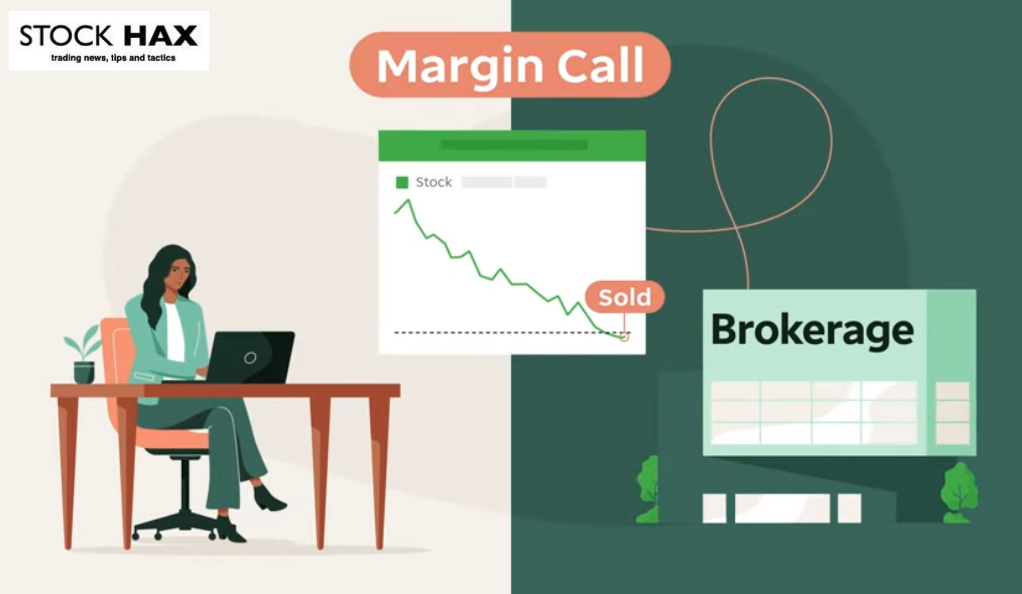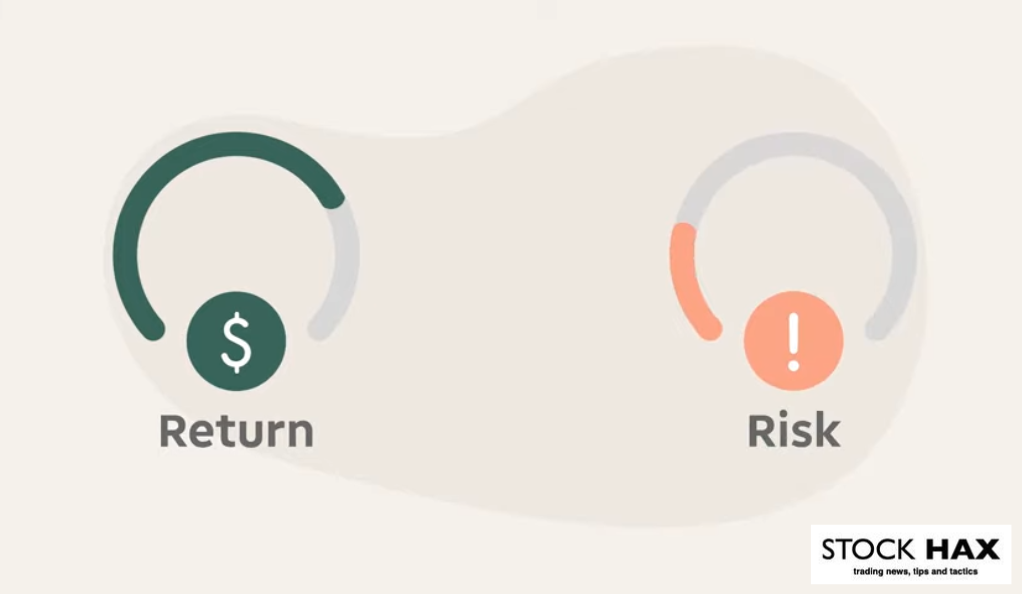This website and its content are not intended to provide professional or financial advice. The views expressed here are based solely on the writer’s opinion, research, and personal experience, and should not be taken as factual information. The author is not a financial advisor and lacks relevant certifications in that regard. We highly recommend consulting a qualified financial advisor before making any investment decisions, as the information presented on this site is general in nature and may not be tailored to individual needs or circumstances.

Margin trading offers investors a unique opportunity to amplify their investment returns by leveraging their existing capital. By accessing borrowed funds, individuals can engage in a broader range of financial instruments and trading opportunities, which were previously out of reach.
In this comprehensive introduction to margin trading, we will explore its fundamental principles, benefits, and risks. By gaining a deeper understanding of margin trading, beginners can confidently navigate its intricacies, make informed decisions, and capitalize on its potential while effectively managing associated risks.
Key Points
- Amplify Your Returns:
- Margin trading allows investors to utilize borrowed funds, multiplying their buying power.
- With increased capital, traders can potentially generate higher profits than with traditional investment strategies.
- Access to Diverse Markets:
- Margin trading enables individuals to participate in a wider range of markets, including stocks, commodities, forex, and cryptocurrencies.
- Investors can diversify their portfolios and take advantage of various market trends and opportunities.
- Leveraging Capital:
- Margin accounts allow investors to use a portion of their own capital and borrow the remaining funds from the brokerage.
- Enhanced Trading Opportunities:
- Margin trading opens doors to advanced trading strategies, such as short-selling and options trading.
- Flexibility and Liquidity:
- Margin trading provides flexibility, allowing investors to quickly enter and exit positions, enhancing liquidity.
- Risk Management:
- While margin trading offers potential rewards, it comes with inherent risks.
- Margin Requirements and Interest:
- Brokers set margin requirements, specifying the percentage of capital that must be held in the account as collateral.
Margin trading presents an enticing prospect for ambitious investors seeking higher profits. By leveraging borrowed funds, individuals can access diverse markets and magnify their buying power.
However, it is crucial to approach margin trading with caution, understand the risks involved, and implement sound risk management strategies. Armed with this comprehensive introduction to margin trading, beginners can embark on their investment journey with confidence.
Definition and Mechanics of Margin Trading
When embarking on a journey of understanding margin trading, it is crucial to get its fundamental concepts and mechanics. Margin trading is a practice that allows investors to trade with borrowed funds.
It lets investors leverage their existing capital to enter positions larger than what their available cash would permit. While engaging in margin trading, investors are required to open a margin account with a brokerage firm, which facilitates the borrowing and lending of funds.
Example
When a margin trade is initiated, the investor contributes a portion of their own capital (the initial margin) and borrows the remaining funds (the margin loan) from the broker.
The borrowed funds are used to purchase additional securities. This can potentially amplify the investor’s gains if the market moves in their favor.
- For instance, let’s say an investor has USD 10,000 in their margin account with a leverage ratio of 3:1. With this ratio, they can borrow up to USD 20,000 (USD 10,000 multiplied by the leverage ratio) from the broker.
- With this increased buying power, the investor can enter larger trades or diversify their portfolio by investing in a broader range of securities.
- However, it is important to note that any losses incurred in margin trading are also magnified. If the value of the investor’s holdings declines significantly, it may lead to a margin call.
- This would require additional funds to be deposited in the account to maintain the required margin level.


The Benefits of Margin Trading
Margin trading offers a range of benefits that entice investors to explore this investment strategy. In this section, we will delve into the advantages of margin trading, highlighting the opportunities it offers to investors seeking enhanced returns and expanded market access.
- Increased Buying Power: Margin trading provides investors with increased buying power by leveraging borrowed funds. This enables them to enter larger positions and potentially generate higher profits if the market moves in their favor.
- Access to a Wide Range of Assets: Margin trading opens doors to a diverse array of financial instruments that may not have been accessible with cash trading alone. Investors can explore stocks, bonds, commodities, and currencies, allowing for greater portfolio diversification and exposure to different sectors and markets.
- Potential for Higher Returns: By leveraging borrowed funds, margin traders have the potential to amplify their returns. For instance, if an investor uses a leverage ratio of 3:1 and a stock they own increases in value by 10%, their actual return would be 30% due to the leverage factor.
- Short Selling Opportunities: Margin trading facilitates short selling, enabling investors to profit from declining markets. By borrowing and selling securities they don’t own, investors can sell high and buy back at a lower price, benefiting from price declines.
In such a scenario, an investor using margin trading has a diversified portfolio with holdings within different sectors. This allows her/him to benefit from favorable market conditions across multiple industries, potentially increasing overall returns compared to a portfolio limited to cash trading.
The advantages of margin trading provide investors with increased flexibility, access to a broader range of asset classes, the potential for higher returns, and the ability to profit from both rising and falling markets.
However, it is crucial to recognize that margin trading involves risks that must be carefully managed. In the next section, we will explore the risks and other important considerations associated with margin trading, ensuring a well-rounded understanding of this investment strategy.
Risks and Considerations of Margin Trading
While margin trading offers attractive benefits, investors need to recognize and manage the inherent risks associated with it.
- Amplified Losses: When using borrowed funds, investors are not only exposed to the fluctuations in the value of their own capital but also to the borrowed funds. If the market moves against their positions, losses can exceed the initial investment, leading to significant negative financial consequences.
- Margin Calls and Liquidation: Margin trading involves maintaining a certain margin level to support borrowed funds. If the value of the securities held in the margin account declines, the account may fall below the required margin level. This triggers a margin call, where investors must deposit additional funds to meet the margin requirements. Failure to meet a margin call can result in the broker liquidating the positions to recover the borrowed funds, potentially locking in losses.
- Interest Costs: Borrowing funds in margin trading incurs interest costs, commonly referred to as margin interest rates. These rates can vary and impact the overall profitability of trades. When assessing potential returns and risk management strategies, investors should also consider interest costs.
- Market Volatility: Margin trading exposes investors to the inherent volatility of financial markets. While volatility can present lucrative opportunities, it also brings increased uncertainty and the potential for rapid price movements that can lead to unexpected losses.
As an example, consider an investor who has borrowed funds to enter a margin trade. If the market experiences a sharp decline, the value of her/his holdings may drop, triggering a margin call.
Failing to deposit additional funds to meet the margin requirements may lead to the liquidation of their positions, resulting in large losses.
By understanding the risks and considerations associated with margin trading, investors can now focus on implementing effective strategies to maximize their returns while mitigating risks better.
Let’s explore some common margin trading strategies that can help investors navigate the dynamic landscape of the financial markets and make more balanced decisions.

Margin Trading Strategies
Margin trading strategies play a crucial role in maximizing the potential of margin trading while managing associated risks. Here are some key strategies utilized by investors in margin trading:
| Strategy | Description |
| Long Positions | – Buying securities with the expectation that their value will rise over time. |
| Short Positions | – Borrowing and selling securities with the anticipation that their value will decline, allowing repurchase at a lower price and profiting from the difference. |
| Hedging | – Taking offsetting positions to minimize potential losses by opening opposite positions that may benefit from market movements contrary to the primary position. |
| Stop-Loss Orders | – Placing predetermined sell orders that trigger when the price of a security reaches a specified level, enabling traders to limit potential losses by automatically exiting a position. |
| Technical Analysis | – Studying past price patterns and market data to identify potential trading opportunities based on historical trends and indicators. |
| Fundamental Analysis | – Assessing the intrinsic value of a security by analyzing relevant economic, financial, and qualitative factors, aiming to identify undervalued or overvalued securities. |
As an example, a margin trader may utilize a stop-loss order to protect against potential losses. By setting a stop-loss order at a specific price level for a short position, the trader can limit their downside risk.
Margin trading strategies empower investors to make calculated decisions and manage risk more efficiently. By incorporating various techniques, traders can navigate the dynamic market landscape with confidence.
Margin Trading Tools and Platforms
Margin trading tools and platforms play an essential role in facilitating effective decision-making, analysis, and trade execution for investors.
- Trading Platforms: Margin trading platforms offer a user-friendly interface that allows investors to access real-time market data, monitor their positions, and execute trades seamlessly. These platforms often provide advanced charting tools, order types, and customization options to cater to the specific needs of margin traders.
- Margin Calculators: Margin calculators are essential tools that enable investors to calculate and assess their margin requirements, buying power, and potential returns. These calculators help traders understand the impact of leverage on their positions and make informed decisions based on their risk tolerance and available capital.
- Research and Analysis Tools: Margin trading platforms often provide access to comprehensive research and analysis tools, including market news, financial reports, and technical analysis indicators. These tools assist investors in conducting thorough market research, identifying potential trading opportunities, and making informed decisions based on their analysis.
- Risk Management Features: Effective risk management is crucial in margin trading. Some platforms offer risk management features such as setting stop-loss orders, take-profit orders, and trailing stops. These features help investors manage their positions and automatically execute predefined actions to limit losses or secure profits.
For instance, trading platforms like eToro, Interactive Brokers, and TD Ameritrade provide comprehensive margin trading capabilities with intuitive interfaces, advanced charting tools, and access to a wide range of financial instruments.
Utilizing margin trading tools and platforms empowers investors with the necessary resources to conduct market analysis, execute trades with confidence, and manage their positions more efficiently.
Conclusion
In conclusion, margin trading presents both opportunities and also related risks for investors. By leveraging borrowed funds, investors can increase their buying power, access a wider range of assets, and potentially achieve higher returns.
However, the amplified gains also come with a possibility of amplified losses, so a careful risk management approach is crucial here. Throughout the article, we have explored the definition and mechanics of margin trading, its benefits, risks, strategies, and the tools and platforms available to interested investors.
Beginners need to approach margin trading with a thorough understanding of its intricacies, a well-thought-through strategy, and disciplined risk management in place. With proper knowledge and diligence, investors may navigate margin trading to potentially unlock new investment opportunities and aim to maximize their trading gains.
FAQ
Are there any asset-class restrictions for margin trading?
Yes, there are usually restrictions on which assets can be traded on margin and which not. However, different brokers may have their own specific lists of eligible securities or other assets they would put restrictions for margin trading.
Are there any tax implications for margin trading?
There are tax obligations related to margin trading in many countries. In most jurisdictions, any profits earned from margin trading are subject to Capital gain tax.
What are some common mistakes or pitfalls to avoid when engaging in margin trading?
One common mistake in margin trading is overleveraging, which means taking on excessive borrowed funds relative to available own capital. This increases the risk of substantial losses if the market moves against the investors. Another pitfall is inadequate risk management, including failing to set appropriate stop-loss orders or neglecting to monitor positions regularly.
StockHax strives to provide unbiased and reliable information on cryptocurrency, finance, trading, and stocks. However, we cannot provide financial advice and urge users to do their own research and due diligence.
Read More